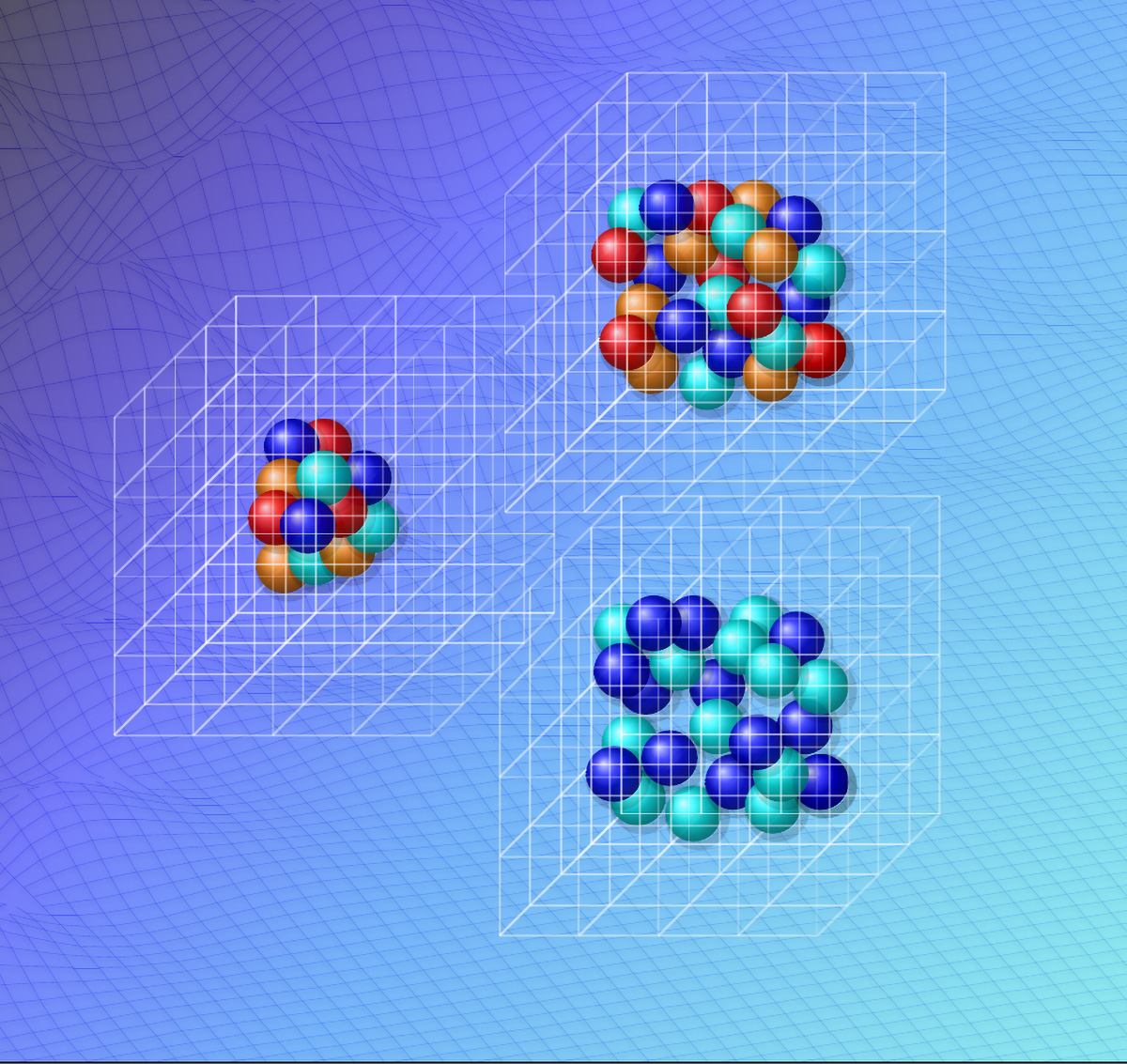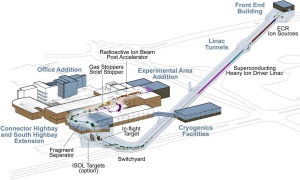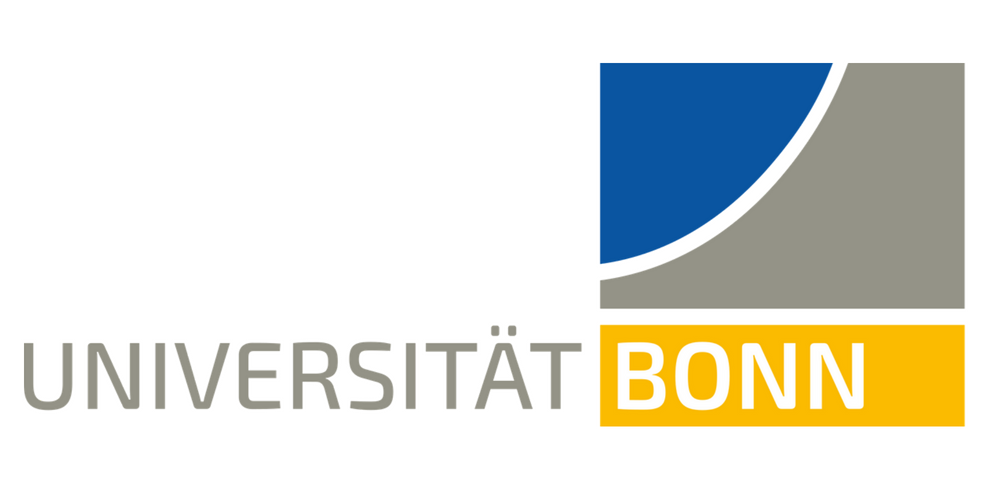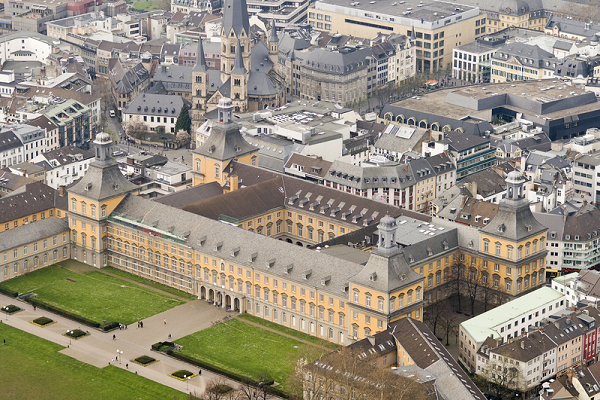From The University of Bonn [Rheinische Friedrich-Wilhelms-Universität Bonn] (DE)
Via
5.21.24

Researchers have developed a new method called “wave function matching” to tackle the sign problem in Monte Carlo simulations, a common issue in quantum many-body physics. By simplifying the interaction model and using perturbation theory for corrections, this method has proven effective in accurately calculating nuclear properties like mass and radius. It holds promise for broader applications in quantum computing and other fields. Credit: Prof. Serdar Elhatisari
Wave function matching for solving quantum many-body problems.
Strongly interacting systems are crucial in the fields of quantum physics and quantum chemistry. Monte Carlo simulations, a type of stochastic method, are widely used to study these systems. However, they face challenges when dealing with sign oscillations. An international team of researchers from Germany, Turkey, the USA, China, South Korea, and France has addressed this issue by developing a new technique called “wave function matching”.
As an example, the masses and radii of all nuclei up to mass number 50 were calculated using this method. The results agree with the measurements, the researchers now report in the journal Nature.
Fig. 1: Wave function matching and the Tjon band.

a, Pictorial representation of wave function matching. The simple Hamiltonian HS is an easily computable Hamiltonian whereas the high-fidelity Hamiltonian H is not. A unitary transformation on the two-nucleon interaction with finite range R is used to produce a new Hamiltonian H′ that is close to HS. In each two-body channel, the ground-state wave function of H′ matches the ground-state wave function of H for r > R and is proportional to the ground-state wave function of HS for r < R. b, The Tjon band correlation between the binding energies of 3H (B3) and 4He (B4). The grey band is the predicted result from ref. 31*. The black open box shows the empirical point. The green diamond, blue circle and red square points show the results at LO, NLO and N3LO in chiral effective field theory, respectively. The open points show the results from the first-order perturbative calculations using the Hamiltonian H and the filled points are the results of the first-order perturbative calculations using the Hamiltonian H′. The error bars show standard deviations.
*Science paper reference.
See the science paper for further instructive material with images.
All matter on Earth consists of tiny particles known as atoms. Each atom contains even smaller particles: protons, neutrons, and electrons. Each of these particles follows the rules of quantum mechanics. Quantum mechanics forms the basis of quantum many-body theory, which describes systems with many particles, such as atomic nuclei.
One class of methods used by nuclear physicists to study atomic nuclei is the ab initio approach. It describes complex systems by starting from a description of their elementary components and their interactions. In the case of nuclear physics, the elementary components are protons and neutrons. Some key questions that ab initio calculations can help answer are the binding energies and properties of atomic nuclei and the link between nuclear structure and the underlying interactions between protons and neutrons.
Challenges and Solutions in Quantum Simulations
However, these ab initio methods have difficulties in performing reliable calculations for systems with complex interactions. One of these methods is quantum Monte Carlo simulations. Here, quantities are calculated using random or stochastic processes. Although quantum Monte Carlo simulations can be efficient and powerful, they have a significant weakness: the sign problem. It arises in processes with positive and negative weights, which cancel each other. This cancellation leads to inaccurate final predictions.
A new approach, known as wave function matching, is intended to help solve such calculation problems for ab initio methods. “This problem is solved by the new method of wave function matching by mapping the complicated problem in a first approximation to a simple model system that does not have such sign oscillations and then treating the differences in perturbation theory,” says Prof. Ulf-G. Meißner from the Helmholtz Institute for Radiation and Nuclear Physics at the University of Bonn and from the Institute of Nuclear Physics and the Center for Advanced Simulation and Analytics at Forschungszentrum Jülich. “As an example, the masses and radii of all nuclei up to mass number 50 were calculated – and the results agree with the measurements,” reports Meißner, who is also a member of the Transdisciplinary Research Areas “Modeling” and “Matter” at the University of Bonn.
“In quantum many-body theory, we are often faced with the situation that we can perform calculations using a simple approximate interaction, but realistic high-fidelity interactions cause severe computational problems,” says Dean Lee, Professor of Physics from the Facility for Rare Isotope Beams and Department of Physics and Astronomy (FRIB) at Michigan State University and head of the Department of Theoretical Nuclear Sciences.

Practical Applications and Future Prospects
Wave function matching solves this problem by removing the short-distance part of the high-fidelity interaction and replacing it with the short-distance part of an easily calculable interaction. This transformation is done in a way that preserves all the important properties of the original realistic interaction. Since the new wave functions are similar to those of the easily computable interaction, the researchers can now perform calculations with the easily computable interaction and apply a standard procedure for handling small corrections – called perturbation theory.
The research team applied this new method to lattice quantum Monte Carlo simulations for light nuclei, medium-mass nuclei, neutron matter, and nuclear matter. Using precise ab initio calculations, the results closely matched real-world data on nuclear properties such as size, structure, and binding energy. Calculations that were once impossible due to the sign problem can now be performed with wave function matching.
While the research team focused exclusively on quantum Monte Carlo simulations, wave function matching should be useful for many different ab initio approaches. “This method can be used in both classical computing and quantum computing, for example, to better predict the properties of so-called topological materials, which are important for quantum computing,” says Meißner.
See the full article here.
Comments are invited and will be appreciated, especially if the reader finds any errors which I can correct.
five-ways-keep-your-child-safe-school-shootings
Please help promote STEM in your local schools.
The University of Bonn [Rheinische Friedrich-Wilhelms-Universität Bonn] (DE) is a public research university located in Bonn, North Rhine-Westphalia, Germany. It was founded in its present form as the Rhein-Universität (English: Rhine University) on 18 October 1818 by Frederick William III, as the linear successor of the Kurkölnische Akademie Bonn (English: Academy of the Prince-elector of Cologne) which was founded in 1777. The University of Bonn offers many undergraduate and graduate programs in a range of subjects and has over 500 professors. Its library holds more than five million volumes.
Among its notable alumni, faculty and researchers are Nobel Laureates, Fields Medalists, Gottfried Wilhelm Leibniz Prize winners as well as some of the most gifted minds in Natural science, e.g. August Kekulé, Heinrich Hertz and Justus von Liebig; Major philosophers, such as Friedrich Nietzsche, Karl Marx and Jürgen Habermas; Famous German poets and writers, for example Heinrich Heine, Paul Heyse and Thomas Mann; Painters, like Max Ernst; Political theorists, for instance Carl Schmitt and Otto Kirchheimer; Statesmen, viz. Konrad Adenauer and Robert Schuman; famous economists, like Walter Eucken, Ferdinand Tönnies and Joseph Schumpeter; and furthermore Prince Albert, Pope Benedict XVI and Wilhelm II.
The University of Bonn has been conferred the title of “University of Excellence” under the German Universities Excellence Initiative.
Research institutes
The Franz Joseph Dölger-Institute studies the late antiquity and in particular the confrontation and interaction of Christians, Jews and Pagans in the late antiquity. The institute edits the Reallexikon für Antike und Christentum, a German language encyclopedia treating the history of early Christians in the late antiquity. The institute is named after the church historian Franz Joseph Dölger who was a professor of theology at the university from 1929 to 1940.
The Research Institute for Discrete Mathematics focuses on discrete mathematics and its applications, in particular combinatorial optimization and the design of computer chips. The institute cooperates with IBM and Deutsche Post. Researchers of the institute optimized the chess computer IBM Deep Blue.
The Bethe Center for Theoretical Physics “is a joint enterprise of theoretical physicists and mathematicians at various institutes of or connected with the University of Bonn. In the spirit of Hans Bethe, it fosters research activities over a wide range of theoretical and mathematical physics.” Activities of the Bethe Center include short and long term visitors program, workshops on dedicated research topics, regular Bethe Seminar Series, lectures and seminars for graduate students.
The German Reference Center for Ethics in the Life Sciences (German: Deutsches Referenzzentrum für Ethik in den Biowissenschaften) was founded in 1999 and is modeled after the National Reference Center for Bioethics Literature at Georgetown University. The center provides access to scientific information to academics and professionals in the fields of life science and is the only of its kind in Germany.
After the German Government’s decision in 1991 to move the capital of Germany from Bonn to Berlin, the city of Bonn received generous compensation from the Federal Government. This led to the foundation of three research institutes in 1995, of which two are affiliated with the university:
The Center for European Integration Studies (German: Zentrum für Europäische Integrationsforschung) studies the legal, economic and social implications of the European integration process. The institute offers several graduate programs and organizes summer schools for students.
The Center for Development Research (German: Zentrum für Entwicklungsforschung) studies global development from an interdisciplinary perspective and offers a doctoral program in international development.
The Center of Advanced European Studies and Research (CAESAR) is an interdisciplinary applied research institute. Research is conducted in the fields of nanotechnology, biotechnology and medical technology. The institute is a private foundation, but collaborates closely with the university.
The Institute for the Study of Labor (German: Forschungsinstitut zur Zukunft der Arbeit) is a private research institute that is funded by Deutsche Post. The institute concentrates on research on labor economics, but is also offering policy advise on labor market issues. The institute also awards the annual IZA Prize in Labor Economics. The department of economics of the University of Bonn and the institute closely cooperate.
The MPG Institute for Mathematics [MPG Institut für Mathematik](DE) is part of the MPG Society for the Advancement of Science [MPG Gesellschaft zur Förderung der Wissenschaften e. V.] (DE), a network of scientific research institutes in Germany. The institute was founded in 1980 by Friedrich Hirzebruch.
The MPG Institute for Radio Astronomy [MPG Institut für Radioastronomie](DE) was founded in 1966 as an institute of the MPG Society for the Advancement of Science [MPG Gesellschaft zur Förderung der Wissenschaften e. V.] (DE). It operates the radio telescope in Effelsberg.
 Effelsberg Radio Telescope- a radio telescope in the Ahr Hills (part of the Eifel) in Bad Münstereifel(DE)
Effelsberg Radio Telescope- a radio telescope in the Ahr Hills (part of the Eifel) in Bad Münstereifel(DE)
The MPG Institute for Research on Collective Goods [MPG Institut zur Erforschung von Gemeinschaftsgütern)(DE) started as a research group in 1997 and was founded as an institute of the Max-Planck-Gesellschaft in 2003. The institute studies collective goods from a legal and economic perspective.
The Center for Economics and Neuroscience founded in 2009 by Christian Elger, Gottfried Wilhelm Leibniz Prize winner Armin Falk, Martin Reuter and Bernd Weber, provides an international platform for interdisciplinary work in neuroeconomics. It includes the Laboratory for Experimental Economics that can carry out computer-based behavioral experiments with up to 24 participants simultaneously, two magnetic resonance imaging (MRI) scanners for interactive behavioral experiments and functional imaging, as well as a biomolecular laboratory for genotyping different polymorphisms.
Research
University of Bonn researchers made fundamental contributions in the sciences and the humanities. In physics researchers developed the quadrupole ion trap and the Geissler tube, discovered radio waves, were instrumental in describing cathode rays and developed the variable star designation. In chemistry researchers made significant contributions to the understanding of alicyclic compounds and Benzene. In material science researchers have been instrumental in describing the lotus effect. In mathematics University of Bonn faculty made fundamental contributions to modern topology and algebraic geometry. The Hirzebruch–Riemann–Roch theorem, Lipschitz continuity, the Petri net, the Schönhage–Strassen algorithm, Faltings’s theorem and the Toeplitz matrix are all named after University of Bonn mathematicians. University of Bonn economists made fundamental contributions to game theory and experimental economics. Famous thinkers that were faculty at the University of Bonn include the poet August Wilhelm Schlegel, the historian Barthold Georg Niebuhr, the theologians Karl Barth and Joseph Ratzinger and the poet Ernst Moritz Arndt.
The university has nine collaborative research centres and five research units funded by the German Science Foundation and attracts more than 75 million Euros in external research funding annually.
The Excellence Initiative of the German government in 2006 resulted in the foundation of the Hausdorff Center for Mathematics as one of the seventeen national Clusters of Excellence that were part of the initiative and the expansion of the already existing Bonn Graduate School of Economics (BGSE). The Excellence Initiative also resulted in the founding of the Bonn-Cologne Graduate School of Physics and Astronomy (an honors Masters and PhD program, jointly with the University of Cologne). Bethe Center for Theoretical Physics was founded in the November 2008, to foster closer interaction between mathematicians and theoretical physicists at Bonn. The center also arranges for regular visitors and seminars (on topics including String theory, Nuclear physics, Condensed matter etc.).




